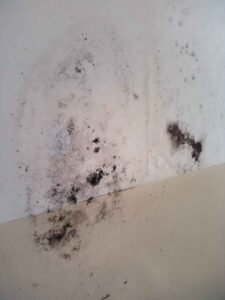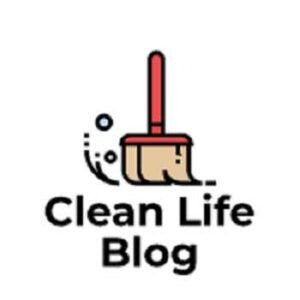Welcome to the comprehensive manual “The Ultimate Guide to Using Lysol for Effective Fungus Control.” As someone who has trodden the path of combating fungus personally, I provide insights from my experiences, ensuring that Lysol can be your hidden trump card.
“Lysol works as an efficient remedy for controlling fungus. Its primary constituent, benzalkonium chloride, possesses strong antifungal abilities. Lysol can fight an array of fungal infections when used correctly – typically by diluting it in water and applying it to the infected site. Remember to follow the maker’s directions for optimal outcomes.”
I guarantee this expedition is laden with invaluable lessons that will prepare you to use Lysol as a potent weapon against fungus, so don’t cease here; there’s so much more to unravel!
Definition of fungus
A fungus is a type of organism that includes yeasts, molds, and mushrooms. Fungi are generally eukaryotic and multicellular, which implies that their cells have a nucleus surrounded by a membrane. They obtain nutrients by breaking down and absorbing organic matter from their surroundings and play essential roles in decomposition and nutrient cycling in ecosystems. Some fungi are pathogens that can cause plant, animal, and human diseases.

Can Lysol Kill Fungus?
“Yes, Lysol can effectively kill fungi. Lysol’s active ingredients, such as quaternary ammonium compounds, hydrogen peroxide, and alcohol, have been proven effective against many microorganisms, including fungi”.
Notably, distinct varieties of fungi may demand varying techniques to manage and avert their growth. Before using Lysol, it is recommended to correctly identify the type of fungus present and follow the product instructions carefully. Furthermore, observing the required safety measures when utilizing Lysol, such as putting on gloves and guaranteeing appropriate ventilation, is imperative.
Following the proper procedures, Lysol can effectively control and prevent fungus growth in various settings.
Step-by-Step Guide: How to Use Lysol to Control Fungi
Materials Needed
- Lysol disinfectant spray or Lysol multi-purpose cleaner
- Clean cloth or paper towels
- Protective gloves
- Ventilation (optional but recommended)
Step 1: Preparation
Before you begin, ensure you have all the necessary materials. Put on protective gloves to avoid direct contact with the Lysol product.
Step 2: Identify the Affected Area
Identify the areas affected by fungi. This could include surfaces, objects, or areas prone to fungal growth, such as bathrooms, kitchens, basements, or other damp environments.
Step 3: Ventilation (Optional)
Open windows or provide adequate ventilation in the affected area to promote air circulation. This step can help remove any musty odors associated with fungal growth.
Step 4: Read the Instructions
Read and follow the instructions provided on the Lysol product label. Familiarize yourself with any precautions or specific recommendations for using the product to control fungi.
Step 5: Test a Small Area (Optional)
If you are still determining how the surface or material will react to Lysol, test a small, inconspicuous area first. Apply a small amount of Lysol to the test area and wait a few minutes. Check for any adverse reactions, such as discoloration or damage.
Step 6: Application
Hold the Lysol disinfectant spray or prepare the Lysol multi-purpose cleaner according to the instructions on the product label. Apply a liberal Lysol to the affected areas, ensuring complete coverage.
Step 7: Allow Dwell Time
To effectively control fungi, allow the Lysol to remain on the surface for the recommended dwell time specified on the product label. This duration ensures the disinfectant can effectively neutralize fungal spores and prevent their growth.
Step 8: Wipe or Rinse (if applicable)
After the dwell time, use a clean cloth or paper towels to remove any excess Lysol or residue. Some Lysol products may require rinsing with water after application, so refer to the product instructions to determine if this step is necessary.
Step 9: Repeat
If Needed For severe fungal growth, you may need to repeat the application process. Ensure you adhere to the frequency and reapplication instructions on the product label.
Step 10: Dispose of Materials
Properly Dispose of any used clothes, paper towels, or gloves. Follow local waste disposal guidelines to ensure you are discarding them in an environmentally friendly manner.
Step 11: Preventive Measures
To prevent future fungal growth, maintain good hygiene practices, keep surfaces clean and dry, and provide adequate ventilation in susceptible areas. Regularly inspect and clean areas prone to moisture buildup, such as bathrooms and basements.
Safety measures when employing Lysol
- Ensure adequate ventilation in the room before using Lysol.
- Don protective gloves and eyewear when employing Lysol.
- Avoid placing Lysol near heat, flames, and direct sunlight.
- Do not mix Lysol with other cleaning agents or chemicals.
- Avoid inhaling Lysol fumes.
- Keep Lysol inaccessible to children and pets.
- Adhere to the instructions on the label when employing Lysol.
- Refrain from using Lysol on surfaces that come in contact with food.
- Properly dispose of Lysol bottles and containers.
- Wash your hands thoroughly after using Lysol.
Best times to use Lysol for effective fungus control
The best times to use Lysol for effective fungus control are when the affected area is dry and moisture-free, as moisture can promote fungal growth. Using Lysol regularly as a preventative measure is also recommended to keep fungus from recurring.
Tips for Effective Fungus Control
Fungi can be stubborn, but their growth can be effectively managed and deterred with the correct methods. Here are some tips for efficient fungus management:
- Maintain cleanliness and dryness: Fungi flourish in moist and unsanitary conditions; maintaining cleanliness and dryness is crucial to prevent fungal proliferation.
- Regularly use Lysol: Lysol can act as a preventive step to keep recurring fungus at bay. Regularly applying it on surfaces susceptible to fungal growth can deter its proliferation.
- Tackle moisture problems: Address the root cause of moisture issues, such as leaks or high humidity, to prevent fungus proliferation.
- Dispose of infected items properly: To prevent the spreading of fungi, it is crucial to dispose of infected items correctly.
- Ensure good ventilation: Adequate ventilation can decrease humidity levels and encourage air circulation, thus preventing fungal growth.
- Stay vigilant for signs of change: Regularly inspecting the area for signs of fungal growth like discoloration or musty smells can help detect it early and prevent further spread.
FAQs on Utilizing Lysol for Efficient Fungus Management
Does Lysol eliminate all types of fungus?
Lysol is touted to eradicate various fungi types due to its antifungal properties.
Can Lysol be employed on fabric?
Indeed, Lysol can be employed on fabric.
How often should Lysol be used for fungus management?
The frequency of employing Lysol for fungus management depends on the specific surroundings and the severity of the fungal growth. Generally, it’s advisable to regularly use Lysol on surfaces prone to fungal growth, like bathrooms and kitchens, to deter its growth. Employing Lysol after dealing with any signs of fungal growth is also suggested to ensure complete eradication. However, adhering to the product instructions and using Lysol sparingly is critical, as overuse can be detrimental and ineffective over time.
Impacts and precautions while using Lysol for fungal control?
While Lysol use is usually safe when adhering to the guidelines, understanding its potential effects when targeting fungi is crucial. To facilitate the secure application of Lysol, usage in a well-aired area and using protective equipment like gloves and a mask is recommended. This helps avoid unintended contact with skin or ingestion through the mouth or eyes. Cease its use immediately if you notice any unwanted responses, and seek medical consultation if required.
How long does it take for Lysol to kill fungus?
The time Lysol requires to obliterate fungi could be variable, hinging on the specific fungi, the severity of its spread, and the unique conditions of the environment harboring it. Lysol aims to kill microorganisms on immediate contact, but specific fungi may demand a more extended contact period for thorough eradication. Strict adherence to the product instructions is essential, along with allowing ample time for the product to act before cleaning it away. Repeat applications might be needed for complete fungus eradication.
Can Lysol target fungal spores?
Lysol can kill a wide range of fungi and their spores. Nevertheless, the efficacy of Lysol in dealing with fungal spores might be affected by various factors, such as the spore type and the conditions of its existence. Some spores might demonstrate higher resilience to disinfectants, needing prolonged exposure or increased Lysol concentrations for effective destruction. For achieving the best outcomes, meticulous adherence to the Lysol product instructions and regular preventive usage is essential.
What cleaners kill fungus?
Several cleaning products can effectively obliterate fungi on surfaces. These include:
- Lysol Disinfectant Spray
- Clorox Clean-Up Cleaner + Bleach
- Pine-Sol All-Purpose Cleaner
- Tilex Mold and Mildew Remover
- Seventh Generation Disinfecting Multi-Surface Cleaner
- Concrobium Mold Control
- RMR-86 Instant Mold and Mildew Stain Remover
Final Thoughts
At its core, prevention and control of fungi spread is vital for maintaining cleanliness and a healthful environment. Lysol has proven its competence as an agent for dealing with and preventing the proliferation of various fungi types, including spores. Adhering to this piece’s advice and best practices, you can utilize Lysol effectively for fungi control.
